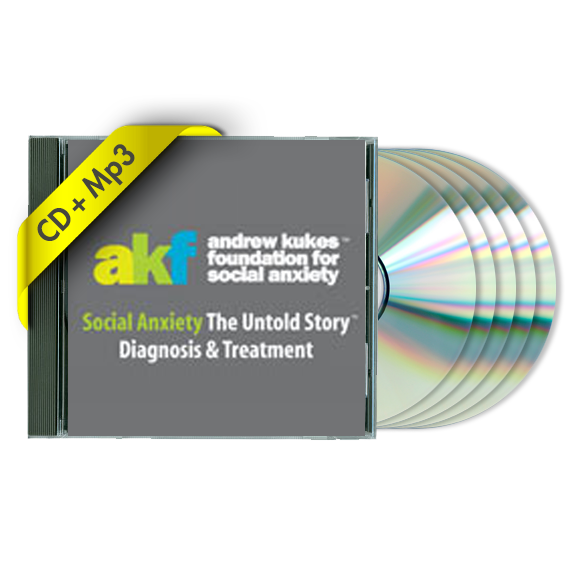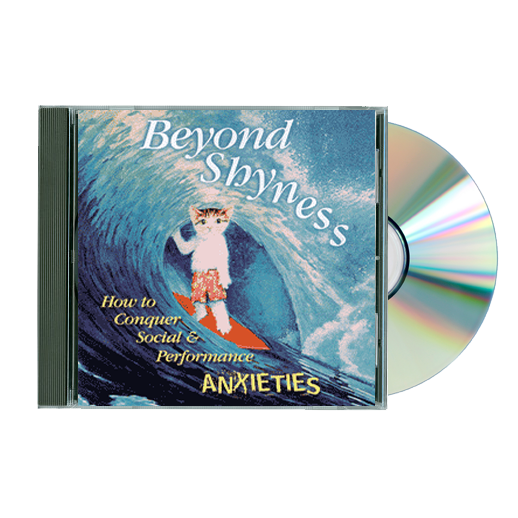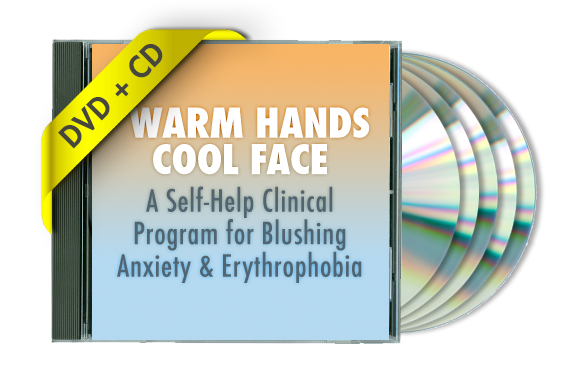Resolve Blushing and Sweating
Documented Clinical Success Since 1978
Treatment Available Worldwide Via Telephone or Skype
also in our Great Neck Office
Hear real interviews with real patients.
-
“Blush, Sweat and Tears” – Clinical Proof that Blushing is Controllable
- Free Seminar: Blushing & Performance Anxiety
- Once having considered an operation to sever her nerves, Diane describes her resolution
- Jim, a successful 26-year-old businessman, who at one time considered a sympathectomy, describes his “turnaround”
- Kevin, A successful lawyer – describes insightfully how he learned psycho-physiological control
- “I’d Rather Be Back in Chemotherapy Than Speak in Front of a Group”: Erythrophobia Resolved
- Karen, a film editor, relates her emotional and physiological challenges and success.
To access our complete library of clinical interviews, click here.
A Psycho-physiological Reality
Facial blushing may occur with or without facial hyperhidrosis. Hyperhidrosis (pronounced “hyper-hydrosis”) is a syndrome characterized by excessive sweating. Blushing and sweating can be especially challenging and embarrassing because the symptoms are so visible. They are typically perpetuated and worsened by performance anxiety and social pressure, so that fear of blushing and fear of sweating morph into phobias. Learning how to stop blushing and sweating is possible with the right education and hard work. Click here to listen to interviews with real people who have resolved blushing and sweating anxiety. If you listen carefully to the content you will learn that pathological blushing is not necessarily an involuntary response. It can be self-regulated.
The Magic Trick:
The Psycho-physiological “Mind Set” for Blushing Control
Patient x was an intelligent, attractive, athletic 20 year old college student who had recently been in a carjacking where he had been shot and almost killed. When he entered therapy with me it was absolutely incredible that this incident was hardly on his mind; what dominated his psyche was his uncontrollable blushing. This blushing, which had been present for many years, caused severe humiliation, shame, embarrassment, and depression. In addition it created substantial social avoidance, and relationship problems.
X was very motivated in treatment. We were able to do core work on self-esteem. Concurrent to this, we worked on the technique of adrenaline acceptance, which is a paradoxical mode of thinking to anxiety sufferers. X adapted the thinking that he was quarterbacking or piloting decision making and began to re-structure the defensive positioning associated with his anxiety.
One day in college when he was presenting a report in front of his class, he started by saying “guys; in a minute you will see a magic trick; my face is going to change color”. Guess what? He did not blush. Why; you are probably asking. The answer is because he went on offense (psychologically and behaviorally) instead of playing defense. By doing this he de-activated his psychological internal critical script that activated his autonomic hyper-sensitivity and the horrific visceral response associated with blushing.
Now don’t think that I suggest everyone implement this technique. It takes tremendous courage and substantial emotional work. The pathology of blushing is based on the sufferer’s belief that the blush is a character flaw and that when a blush occurs the flaw is revealed. Click here to listen to “Robert: Gifted Salesman” who describes two levels of anxiety during public speaking. Level one is “people can see I’m nervous”. Level two, which is deeper, is “people can see who I really am”.
The point I do want to teach is that when a proactive mind set is learned it can deactivate what appears to be an uncontrollable physiological reaction. It does take hard work! Click here for a detailed description of the Berent Method: High Performance Therapy for Social Anxiety”.
Click here to access our complete free library of clinical interviews with real patients.
There are many free self diagnostic options at www.social-anxiety.com
Read the article: “Blushing-Driven Suicide Opens the Door for Understanding of Complex Social Anxiety Disorder“
RELATED PRODUCTS
-

Social Anxiety: The Untold Story
-

Beyond Shyness: How To Conquer Social Anxieties
-

Work Makes Me Nervous
-

Comprehensive Self-Therapy Audio Program
-

Selective Mutism Seminar Audio CD/MP3 Program
-

Self-Help Program for Parents of Children with Selective Mutism
-

Free Sociability Questionnaire
-

Social Therapy and The Learning Disabled
Related Posts
Blushing Anxiety Impacts Helpless Millions: Groundbreaking Program for Erythrophobia
It is a widely held belief that blushing is an involuntary response. Evidence that it can be controlled can be found via numerous clinical interviews here. In 2012 Brandon Thomas committed suicide. His parents said it was driven by his “unbearable blushing.” Soon after, Dr. Enrique Jadresic, who has been referenced as the world’s foremost […]
Recovery from Eryhtrophobia: Letter to a Blush
For years I feared your arrival, like an unwelcome last-minute guest who spoils the party every time, humiliating me in front of all my other, important guests. At first I had a hard time seeing you coming and was always caught off guard; then I came to expect you, so I stopped planning so many […]
Blushing Driven Suicide Opens Door for Understanding of Social Anxiety
July 16, 2012 – The recent tragedy where Brandon Thomas, a 20 year old college student, committed suicide opens the door for an improved understanding of a complex social anxiety disorder which currently impacts countless individuals of all ages worldwide. According to his parents, Brandon’s suicide was driven by his “unbearable blushing”. Most medical […]
RELATED USER QUESTIONS
Self-Help and Treatment Options
- Free Audio CD from Social-Anxiety.com
- Social Anxiety: The Untold Story
- Beyond Shyness: How To Conquer Social Anxieties
- Work Makes Me Nervous
- Comprehensive Self-Therapy Audio Program
- Public Speaking Anxiety Self-Therapy Audio Program
- “Warm Hands Cool Face” A Self-Help Clinical Program for Blushing Anxiety & Erythrophobia
- The Berent Method: High Performance Therapy for Social-Anxiety
- Telephone/skype therapy available worldwide
- Selective Mutism Seminar Audio CD/MP3 Program
- Self-Help Program for Parents of Children with Selective Mutism
- The Sociability Questionnaire
- Tip of the Month Club
- Social Therapy and The Learning Disabled
- Free Parent Addiction Survey





